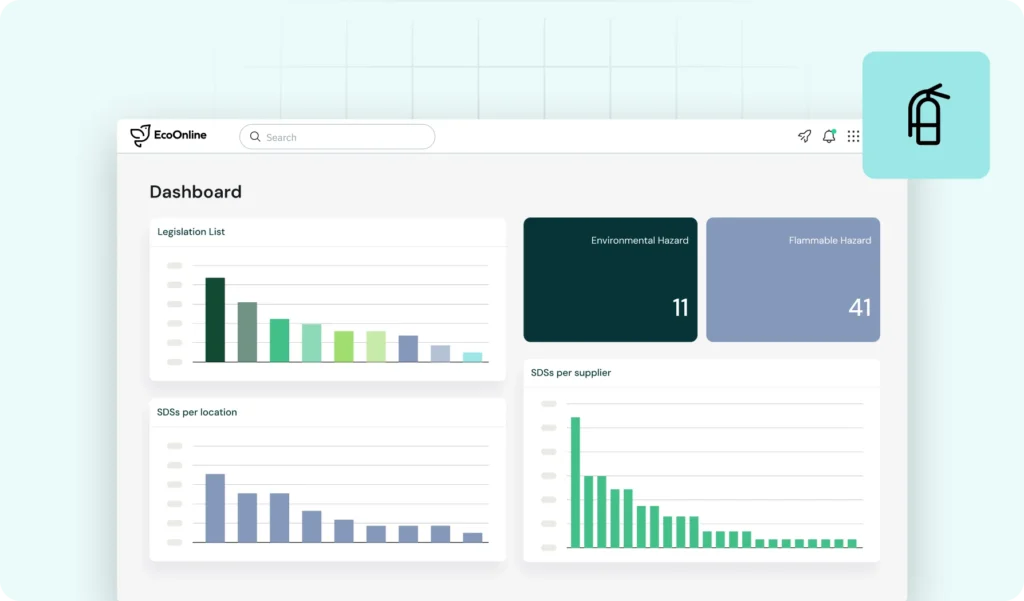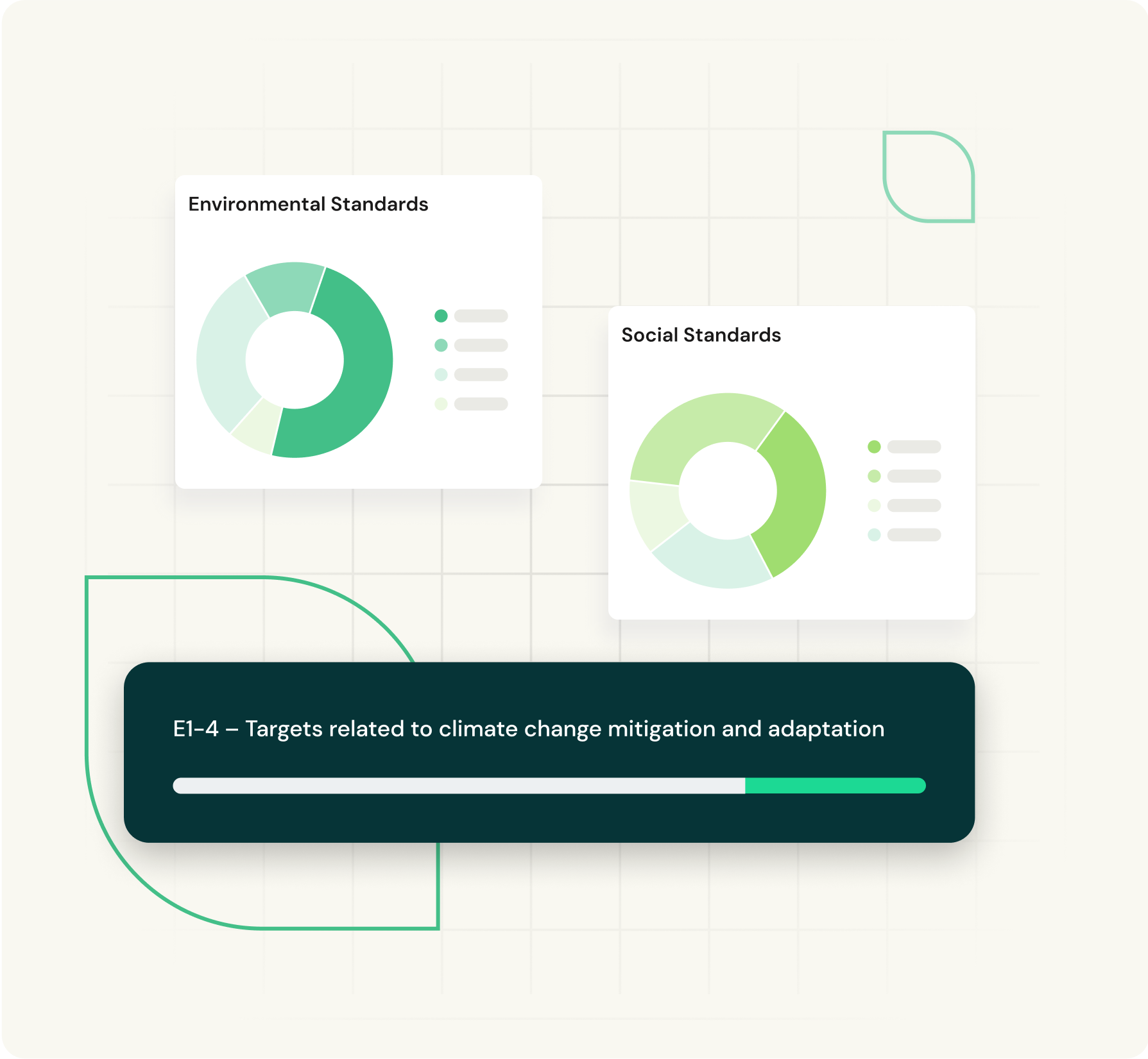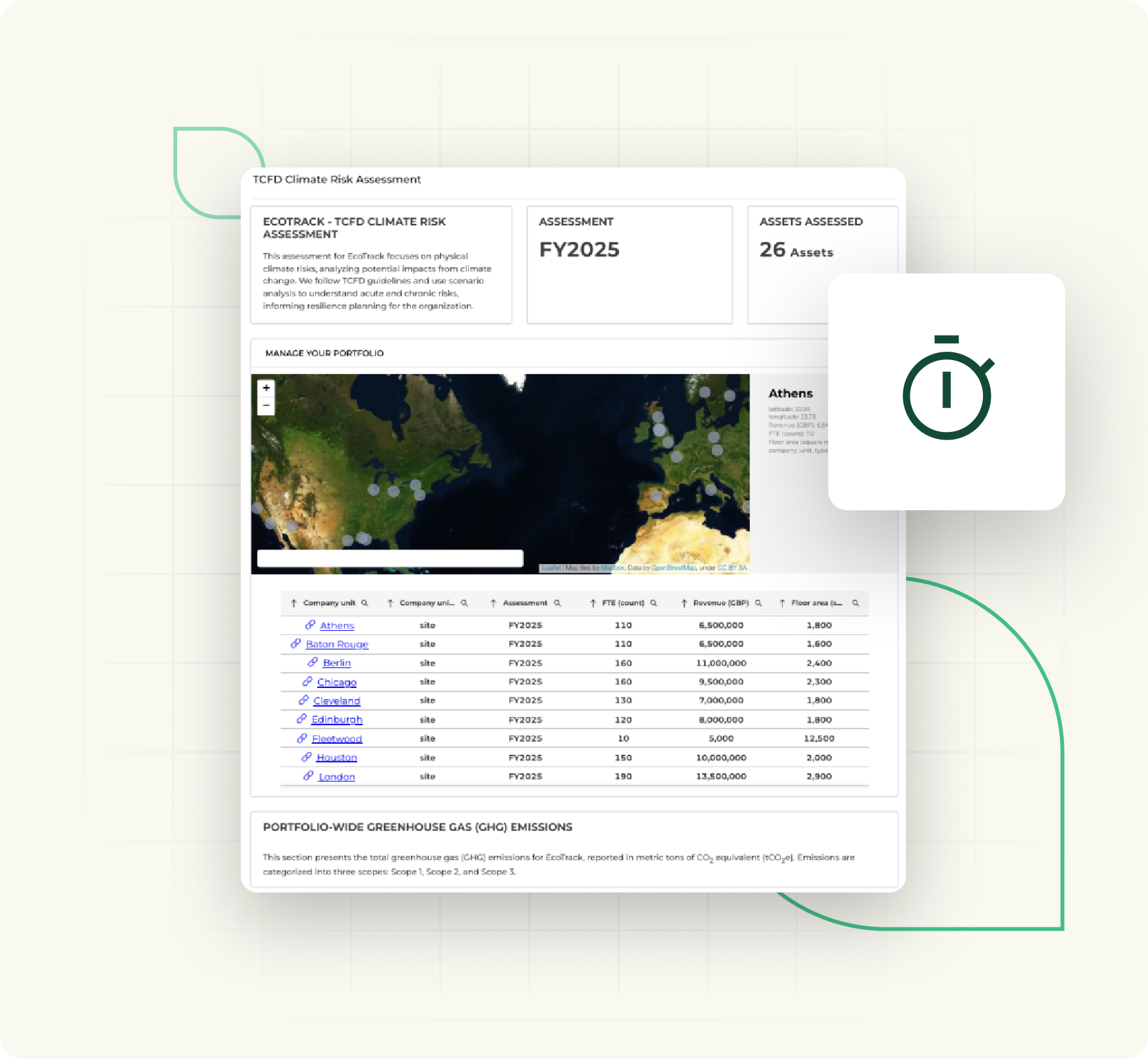SECR reporting software to ensure you fully comply with reporting requirements
Collect and calculate your energy use and carbon emissions, automatically formatting them to SECR specifications.
“I really find this a great and easy user-friendly system, easy to teach new users.”
Bill D
Senior Site Manager
“User friendly Chemical Inventory list with easy access to SDS.”
Remy H
Senior Engineer
“This is a must for any business.”
Mandy H
Health and Safety Manager
If you are subject to SECR, do you know what data to collect?
If you are subject to SECR, do you know what data to collect?
Approximately 11,900 companies across the UK must report via SECR. If you are one of them, you must report both carbon and energy emissions.
To further complicate matters, your SECR reporting requirements will differ depending on whether you are a quoted company, a large unquoted company or LLP.


SECR reporting requirements may be expanding, will you be able to comply?
With Scope 3 emissions likely to be added to the SECR reporting legislation, collecting accurate emission data is more important than ever.
Getting a full picture of your organisation’s emissions is a time-consuming task and data must be delivered in an auditable state.
With variables such as emissions factors constantly changing, how can you keep up with the workload?
Collect, calculate and report all SECR information with ease
Powered by Ecometrica, our Sustainability Reporting Software is fully compliant with the SECR framework and gives you the confidence that you are meeting all reporting requirements.
- Easily collect, calculate and report your energy use and carbon emissions with full SECR compliance.
- Access to our constantly updated emission factor database means that you can focus solely on gathering organisational data.
- Our SECR outputs contain transparent, rigorous calculations, meaning you are always audit-ready.

Comprehensive Support for leading sustainability frameworks
STEP BY STEP
Getting started is simple

Fill out the contact form
We’ll be in touch in the next 24-48 hours on weekdays to schedule a chat with one of our consultants.

Your personalised guided tour
You’ll get concierge-level service, with a customised tour to demonstrate how our software can help.

Start your journey towards a safer workplace
Discover how simple Chemical Safety can be when you’ve found the right solution for your organisation.
Get the SECR process right the first time with the following features:
Emission factors calculation engine
We source and verify the quality of emission factors in our constantly updated database, so you don’t have to.
SECR framework compliant
All questions, activities and calculations have been checked to output to the SECR framework.
Multiple user logins
Supports multiple user access, with the ability to email questions directly to colleagues.
Secure, central storage for documentation
All your evidence files, data and associated documentation in one place, ready for audit.
Make use of your data
Our software allows data entry using either primary data, spend data, or published assumptions.
Pre-made report
Our SECR output delivers information in an easy-to use manner, ready for your annual report.

Are you ready to take the pain out of your SECR preparations? Then let’s talk.
When you speak with one of our in-house experts, you get to see exactly how our software can speed up the reporting process.
20+ YEARS OF EXPERIENCE
Trusted by 11,000+ customers worldwide
With knowledge from 90 different industries, we have developed our platform to make sure it tailors to your needs.
Be in the know
Access industry-leading information
Frequently asked questions
In the UK, the SECR (Streamlined Energy and Carbon Reporting) regulations replaced the Carbon Reduction Commitment (CRC) scheme on April 1st, 2019 in an attempt to simplify reporting requirements whilst bringing almost 8,000 more businesses into the UK’s mandatory carbon reporting. The reporting requirement of energy and carbon for all large organisations in the UK (except for some SECR reporting exemptions, see below) is in line with the Taskforce on Climate-related Financial Disclosures (TCFD) recommendations.
From the 19th of October, the UKs Department for Energy Security and Net Zero released a call for evidence on the costs, benefits and practicalities of Scope 3 emissions reporting in the UK. This call for evidence closed on the 14th of December 2023.
SECR aims to:
- Provide greater transparency for investors and other stakeholders
- Increase awareness around energy costs within organisations
- Level the reporting burden between quoted and unquoted organisations
- Provide organisations with the right emissions data to inform energy efficiency measures and opportunities to reduce their impact on climate change.
For financial years starting on or after April 1st, 2019, the Streamlined Energy and Carbon Reporting (SECR) regulations affect:
- Quoted companies;
- Large* unquoted companies;
- Large* Limited Liability Partnerships (LLP)
Organisations exempt from the full SECR disclosure include those that can confirm they have used 40,000 kWh of energy or less over the reporting period, where the directors consider the disclosure of the energy and carbon information would be seriously prejudicial to the interests of the organisation, and where it is not practical to obtain the information requested in the disclosure.
Companies in scope of the legislation will need to include their energy and carbon information in their Directors’ Report as part of their annual filing obligations. SECR reporting guidance is published in full by the UK Government’s Department for Business, Energy and Industrial Strategy (BEIS).
Large companies are defined by the UK Companies Act 2006 as those which have two or more of the following criteria for the reporting period:
- An annual balance sheet greater than £18m
- More than 250 employees
- An annual turnover greater than £36m
- Annual greenhouse gas emissions from activities for which the company is responsible including combustion of fuel and operation of any facility; and the annual emissions from the purchase of electricity, heat, steam or cooling by the company for its own use
- Underlying global energy consumption
- Previous year’s figures for energy use and greenhouse gas emissions
- At least one intensity ratio
- Energy efficiency action taken
- Methodology used
- UK energy use (as a minimum gas, electricity and transport, including UK offshore area)
- Associated greenhouse gas emissions
- Previous year’s figures for energy use and greenhouse gas emissions
- At least one intensity ratio
- Energy efficiency action taken
- Methodology used
A greenhouse gas (GHG or GhG) is a gas that absorbs and emits radiant energy within the thermal infrared range, causing the greenhouse effect. The greenhouse gases (GHG) included in the atmospheric emissions are those covered by the Kyoto Protocol: carbon dioxide (CO2), methane (CH4), nitrous oxide (N2O), hydrofluorocarbons (HFCs), perfluorocarbons (PFCs), sulphur hexafluoride (SF6), and nitrogen trifluoride (NF3).
These gases contribute directly to global warming and climate change, because of their positive radiative forcing effect. The potential of each GHG to cause global warming is assessed in relation to a given weight of CO2, so all greenhouse gas emissions are measured as carbon dioxide equivalents (CO2e).
Emission factors are conversion factors applied to activity data to enable the conversion from raw data to estimated GHG emissions. In calculating GHG emissions from a particular source, geographically relevant and up-to-date factors should be sourced, and care must be taken when selecting the factor.
Created in 2015 by the Financial Stability Board (FSB), the Task Force for Climate-related Financial Disclosures or TCFD is a reporting framework followed in many regions of the world including the European Union, Canada, and Japan to name a few. Its main goal is to allow organisations to see the impact they have on the environment, allowing them to make more sustainable choices in the future.
EHS Software
Automated EHS insights from the field into the boardroom
Real-time data and analytics help you spot trends and monitor leading indicators from easy-to-use software.

Chemical Safety
Chemical safety compliance across multiple sites
Reduce risks, maintain compliance, and save time with a user-friendly cloud-based chemical management tool.

Training & eLearning
Safe workers are trained workers
Empower your frontline workers with an intuitive management system to help reduce injuries AND admin time.
















